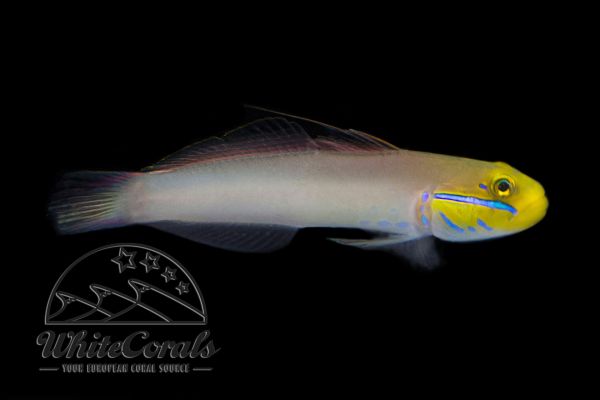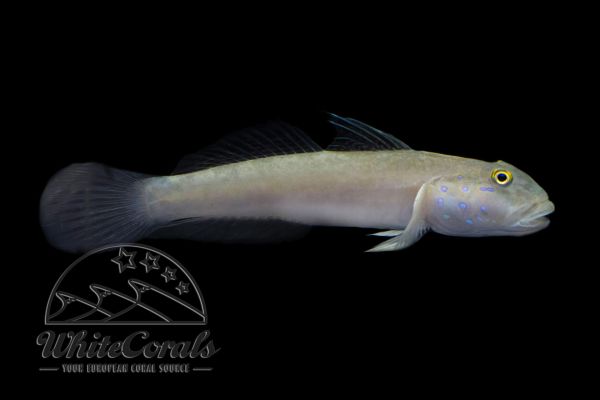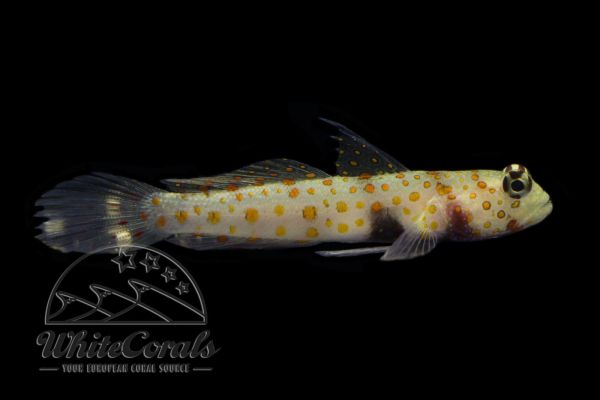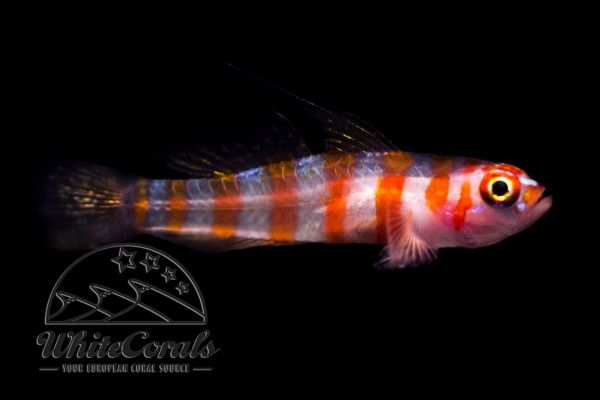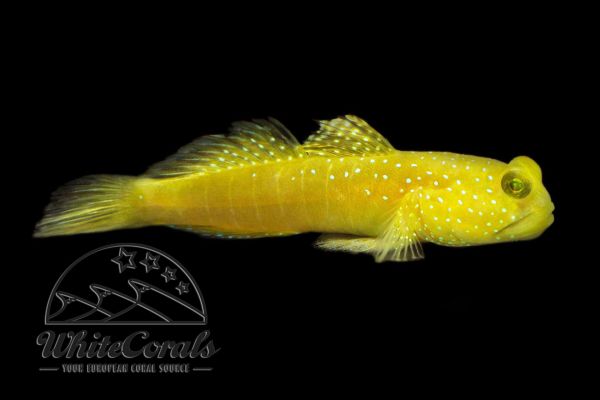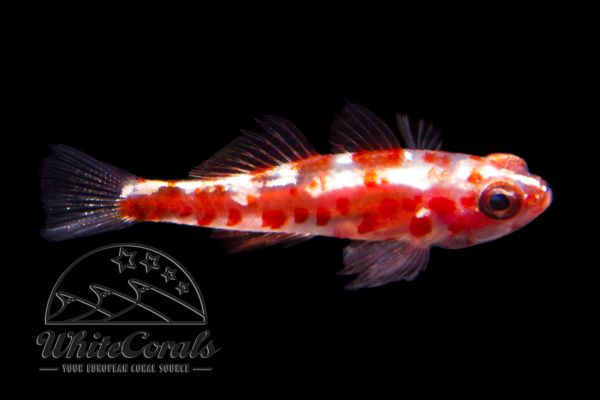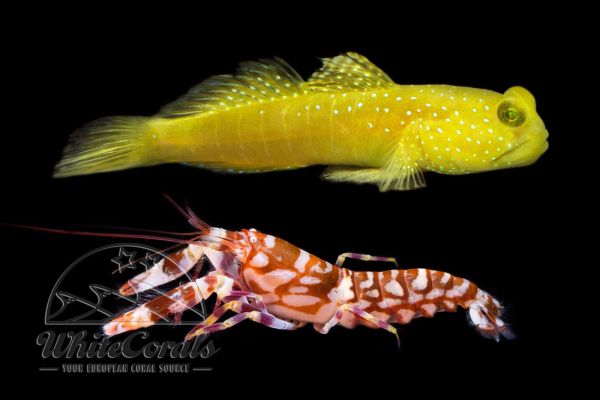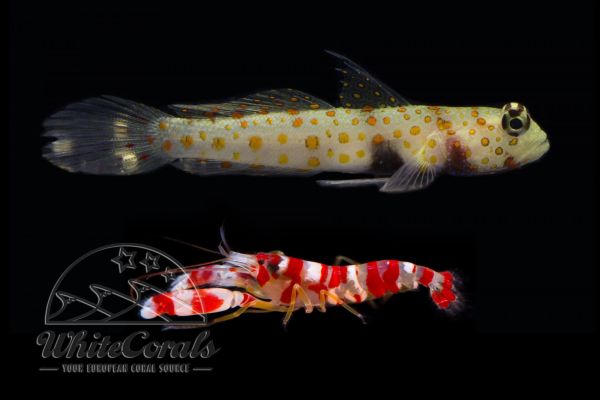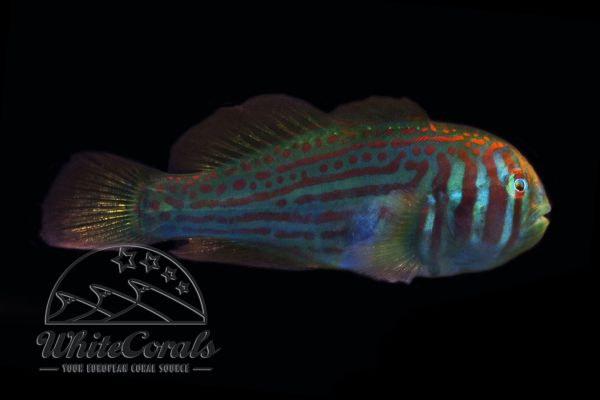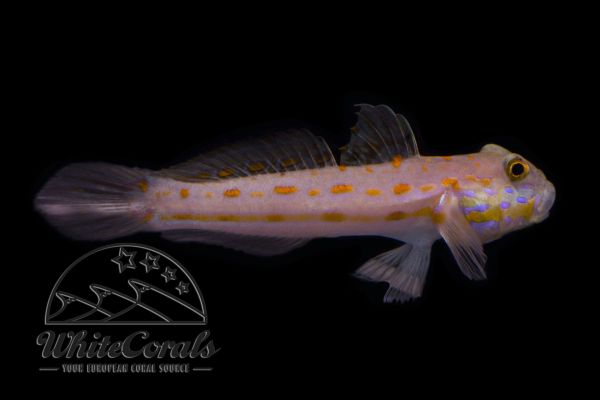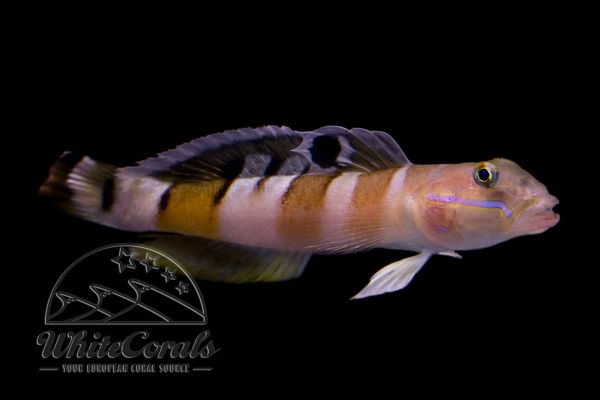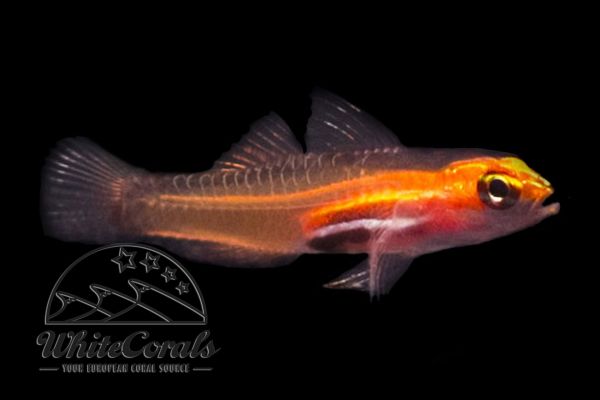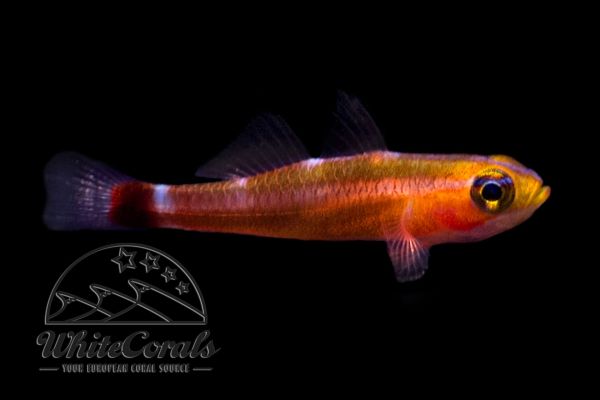Fish
There are very few gobies who live in the open water. The wonderful Nemateleotris species belong to this. Gobies are specially suitable to be kept in the marine aquarium due to their small size. Often they also fulfill a special purpose: Some of them keep digging the sand to ensure that it always appears white. Others live together with symbiotic partners which is really spectacular to watch.
Valenciennea strigata - Sleeper Goldhead Goby
EUR 29,90*
to articleValenciennea sexguttata - Sleeeper Bluedot Goby
EUR 29,90*
to articleAmblyeleotris guttata - Spotted Prawn-Goby
EUR 27,90*
to articleNemateleotris magnifica - Firefish
EUR 32,90*
to articleTrimma cana - Candycane Pygmy Goby
EUR 29,90*
to articleCryptocentrus cinctus - Yellow prawn-goby
EUR 26,90*
to articleTrimma benjamini - Ring-eye Pygmy Goby
EUR 29,90*
to articleTrimma rubromaculatum - Red-Spotted Dwarf Goby
EUR 29,90*
to articleAmblyeleotris aurora with Alpheus randalli - Shrimp Goby and
EUR 59,80*
to articleCryptocentrus cinctus with Alpheus randalli - Prawn-goby (Aq
EUR 59,80*
to articleCryptocentrus cinctus with Alpheus bellulus - Yellow prawn-g
EUR 51,80*
to articleAmblyeleotris guttata with Alpheus randalli - Spotted Prawn-
EUR 54,80*
to articleCryptocentrus cinctus with Alpheus randalli - Yellow prawn-g
EUR 53,80*
to articleSymbiotic gobies and partner gobies
"Most interesting: Symbiotic gobies with partner crabs!"
